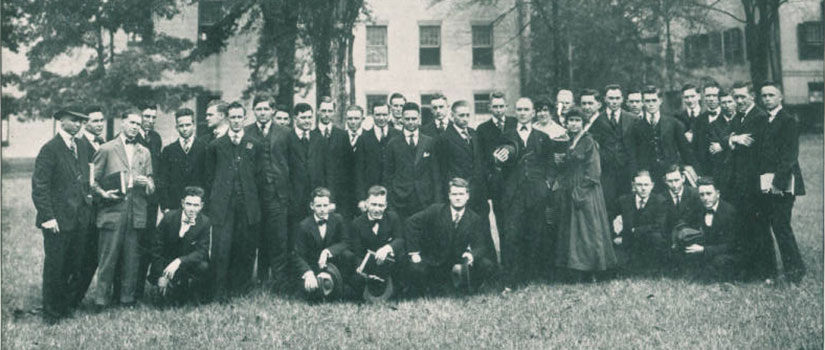The early 20th century saw a series of “firsts” that would have a tremendous impact on the School of Law, including breaking new ground for its first building, educational programs and both the size and composition of its student body.
In 1900, Joseph Daniel Pope was named the first dean of the School of Law, and by 1906, the law faculty had grown to three. Enrollment increased from 32 students in 1907 to 75 students in 1917.
It was during this time that the course of study was expanded to two years, and the case method of teaching was adopted. A century later, it continues to be the most prevalent style of legal classroom education.
Minna Layton Holman and Claudia James Sullivan graduated from the School of Law on June 12, 1918, earning the distinction of being its first female graduates. By happenstance of her last name being earlier in the alphabet, Holman became the first woman to graduate. Despite their groundbreaking achievement, women remained very much the exception for nearly another half century.
In 1919, Petigru College (now Currell College) became the first separate law school, costing $40,000. In 1924, the School of Law, then having a faculty of six, was accepted as a member of the Association of American Law Schools, and in 1925 was accredited by the American Bar Association. That same year, the curriculum was expanded to a full three-year course.
Two prestigious student organizations, which continue today, had their origins in the School of Law in the 1930s. In 1935, two students created the Order of Wig and Robe, initially honoring seven seniors and five juniors who had attained the highest academic averages. Today, the Order continues to recognize the top second-year and third-year law students.
In 1937, the Year Book of the Selden Society began publication as the voice of an organization formed in 1933 to promote interest in “legal history and the scholarly aspects of the legal profession among law students.” Over time, it evolved into a more traditional academic journal, becoming the South Carolina Law Quarterly in 1948 and the South Carolina Law Review in 1962.
In 1938, the School of Law ushered in the birth of experiential learning, creating the nation’s first practice court program under Judge Marcellus Whaley, a professor at the School of Law from 1937–1950.
